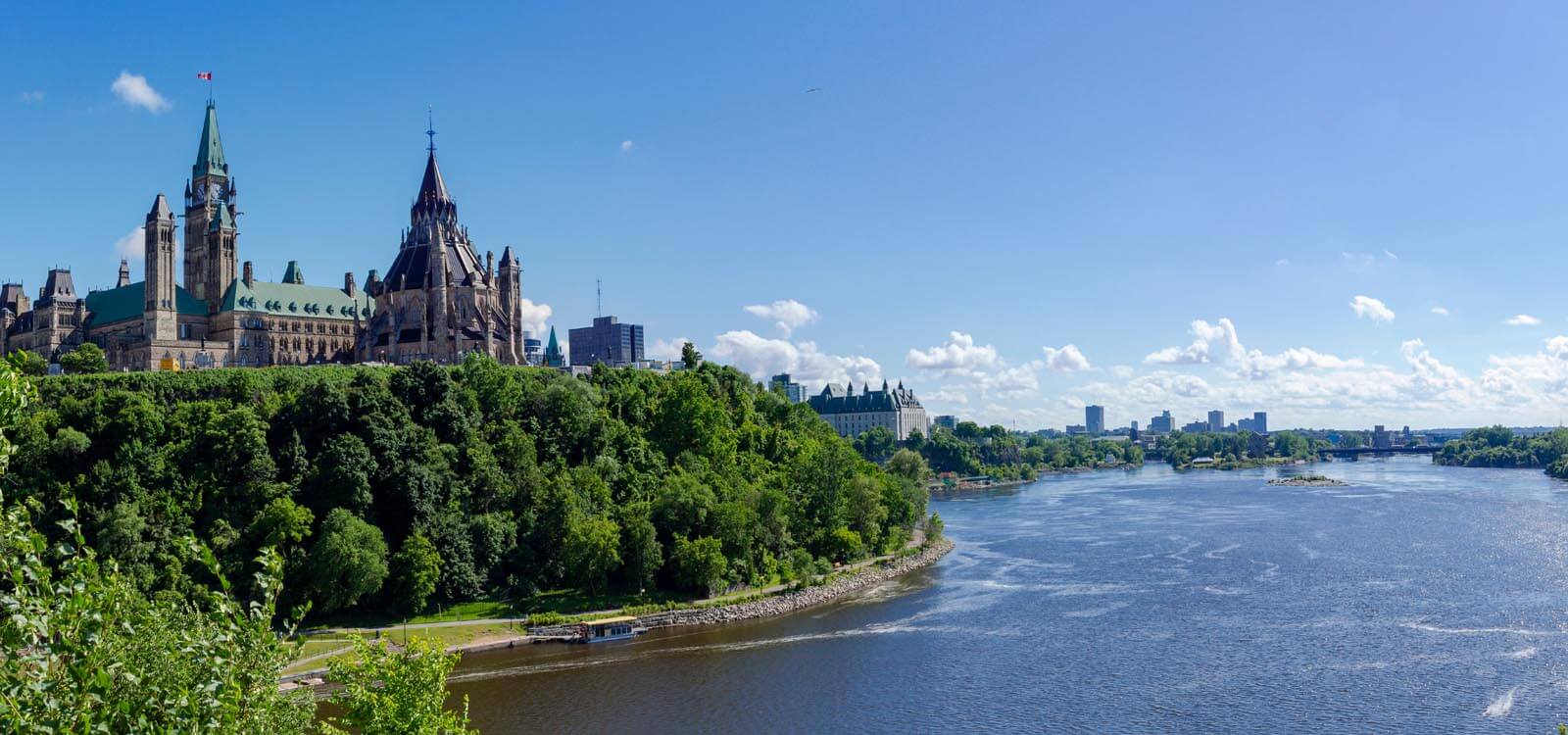
Ontario
The Waterway Route
Overview
Print PageThis RV route runs eastward on Hwy #7 from Port Severn on Georgian Bay, through cottage country to Ottawa, down the Ottawa River Valley, back Hwy #2 along the north shore of Lake Ontario to the intersection with Hwy #400 north of Toronto. There are many deviations and side trips to campgrounds and points of interest along the way.
Duration
14 DAYS
Distance
2000km / 1243mi
Start / End
Toronto / Toronto
Region
Ontario

Route - 2000 km / 1243 mi
| Day | Location | Distance | Duration |
|---|---|---|---|
| 01 | Toronto to Port Severn | 142 km / 88 mi | 1.5 hours |
| 02 | Port Severn to Kirkfield | 150 km / 93 mi | 1.5 hours |
| 03 | Kirkfield to Peterborough | 120 km / 75 mi | 1.25 hours |
| 04 | Peterborough to Smiths Falls | 260 km / 162 mi | Approx 3 hours |
| 05 | Smiths Falls to Ottawa | 120 km / 75 mi | 1.5 hours |
| 06 | Ottawa / Gatineau | 30 km / 19 mi | Approx 20 minutes |
| 07 | -- | ||
| 08 | Ottawa/Gatineau to Hawkesbury | 150 km / 93 mi | 1.5 hours |
| 09 | Hawkesbury to Cornwall | 300 km / 186 mi | Approx 3.5 hours |
| 10 | Cornwall to Prescott | 85 km / 53 mi | Approx 1 hour |
| 11 | Prescott to Kingston | 130 km / 81 mi | Approx 1.5 hours |
| 12 | Kingston to Belleville | 130 km / 81 mi | Approx 1.5 hours |
| 13 | Belleville to Oshawa | 150 km / 93 mi | 1.5 hours |
| 14 | Oshawa to Brampton | 80 km / 50 mi | Approx 1.5 hours |
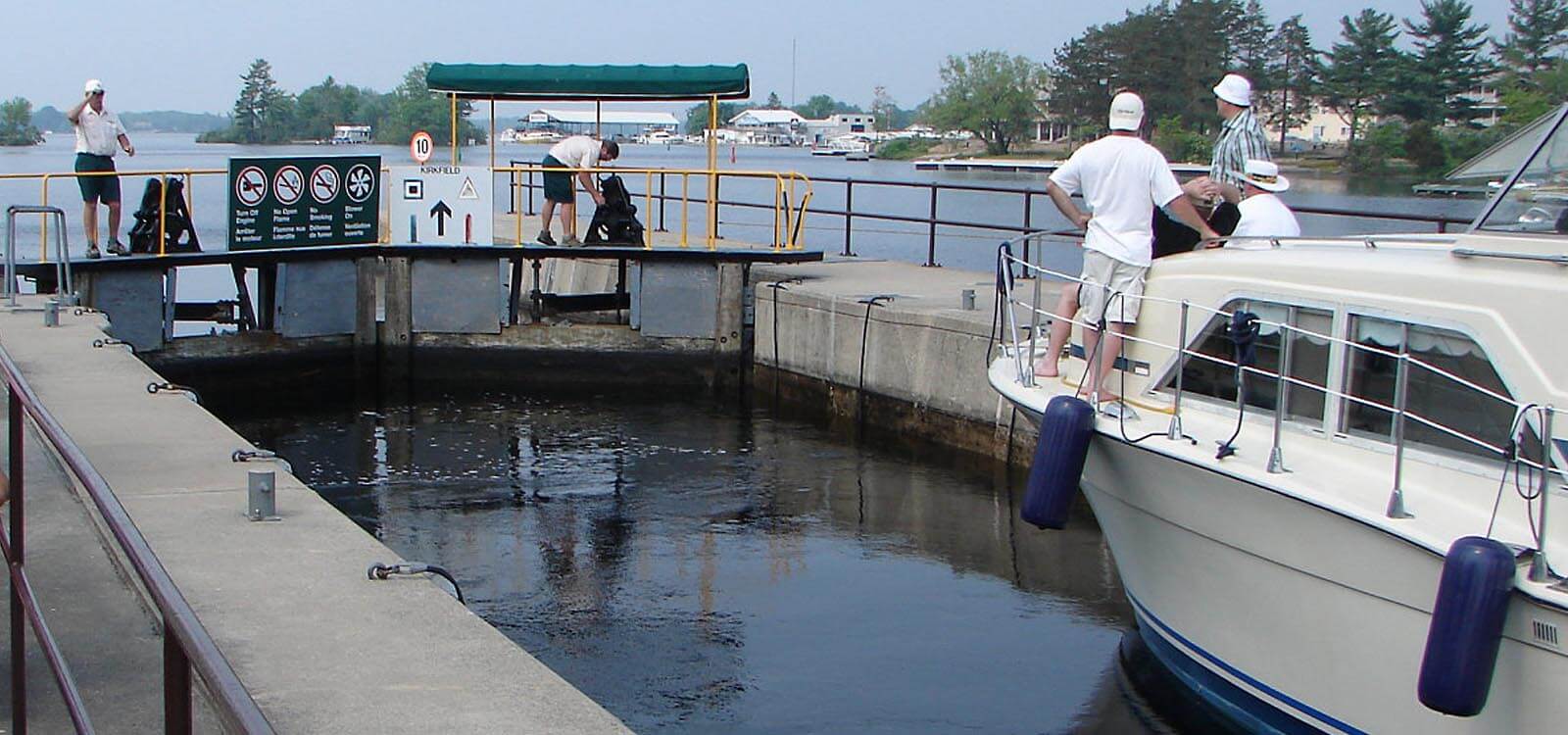
Lock 45 on the Trent-Severn Waterway
Day 1
Toronto to Port Severn
We’re Port Severn bound today to begin our Waterway Route tour at the start of the Trent-Severn Waterway.
See Details
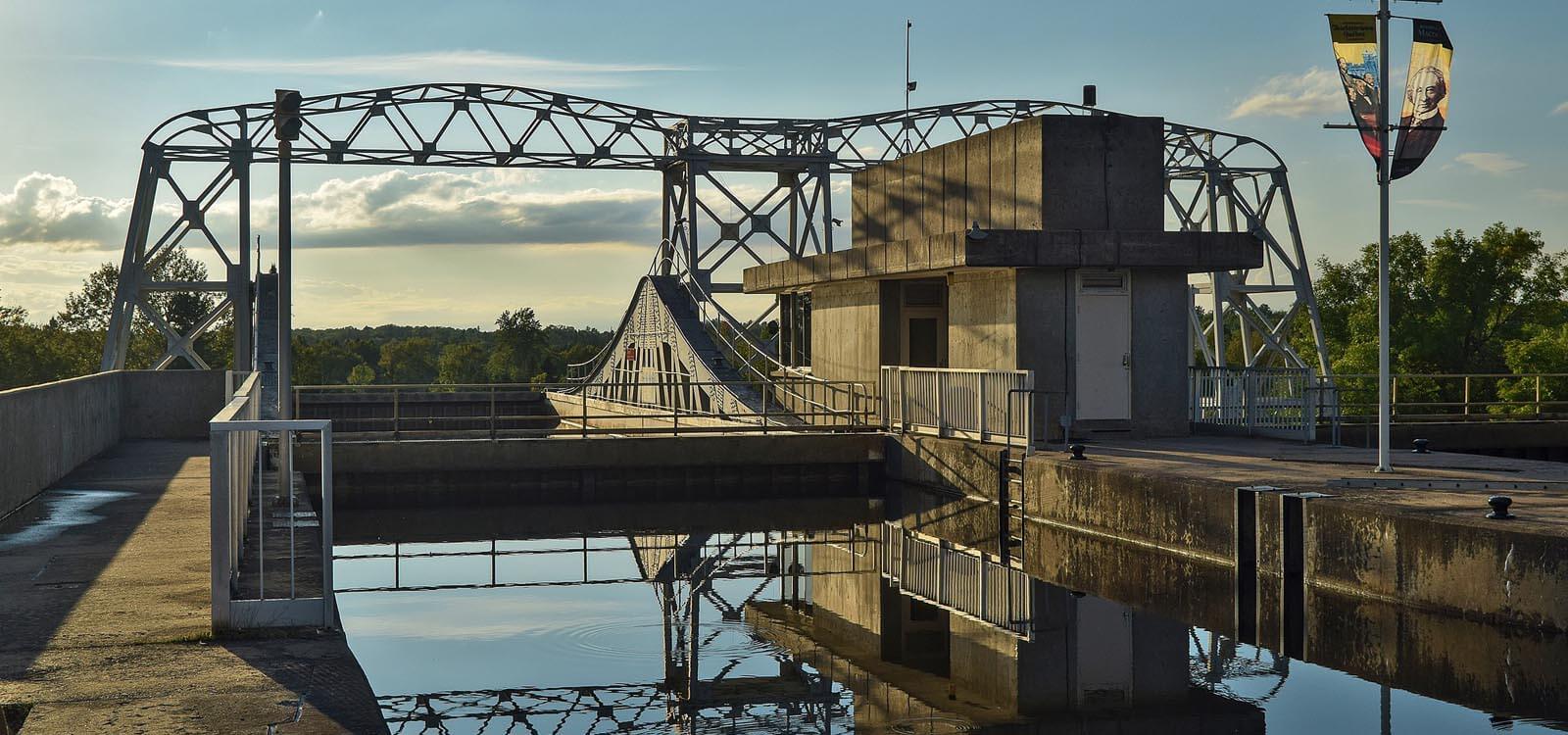
Kirkfield Lift Lock - Photo Credit: The Cosmonaut, CC BY-SA 2.5
Day 2
Port Severn to Kirkfield
Take time out en route to Orillia and Kirkfield (Upper Big Chute Road, Hwy 17) to check out the Big Chute Marine Railway at lock 44. It’s the only marine railway of its kind still in use in North America.
See Details
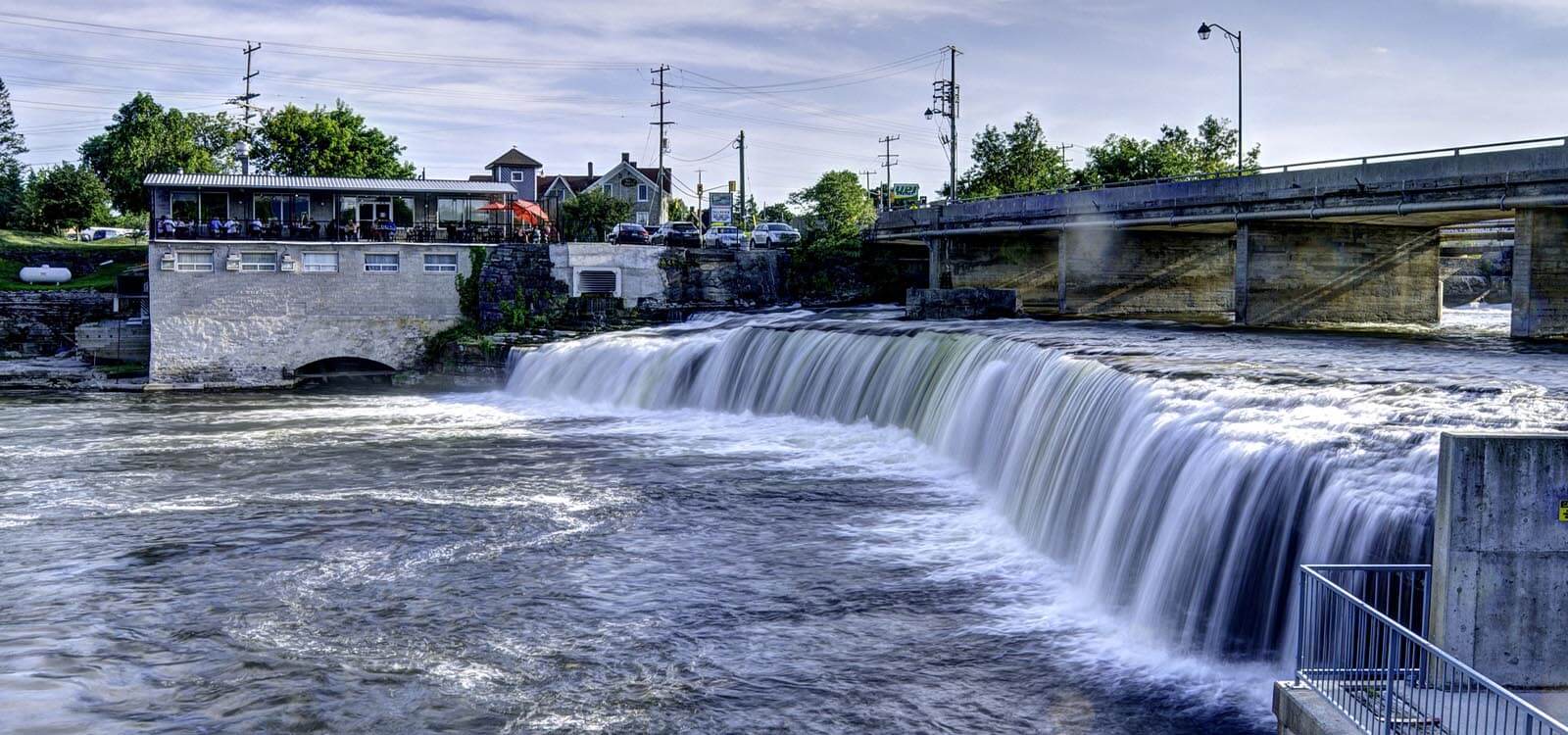
Fenelon_Falls - Photo:Eric Marshall, CC BY 3.0
Day 3
Kirkfield to Peterborough
The Kawartha Lakes region features lakes galore and today your journey will take you around Balsam Lake, stopping in Rosedale at Lock 35, before continuing on Highway 35 toward Peterborough.
See Details
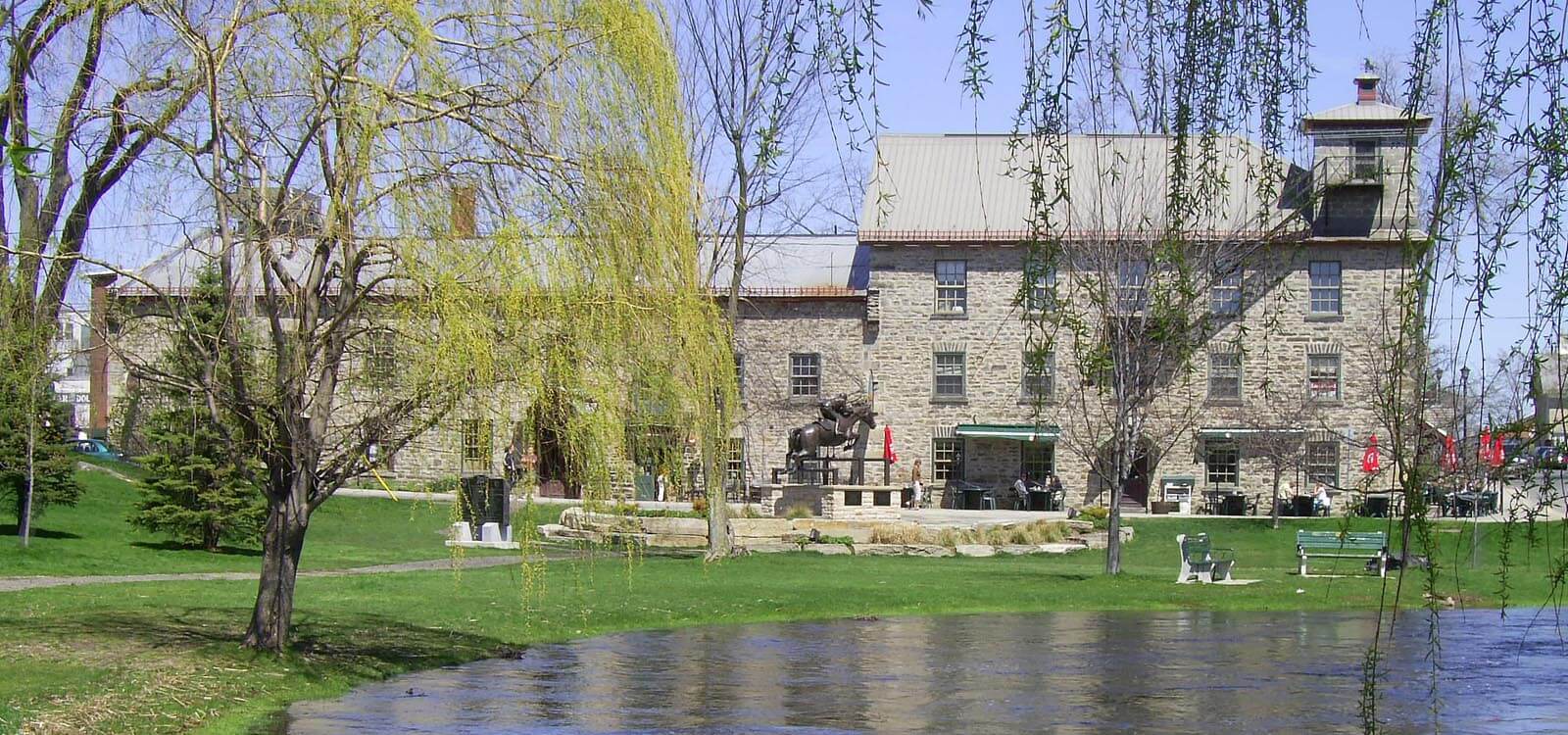
Perth, Ontario - Photo: Kenn Chaplin CC BY-SA 2.0
Day 4
Peterborough to Smiths Falls
Follow Highway 7 through to Perth and Smiths Falls. Take a break at Sharbot Lake Provincial Park – perhaps even a swim might be on the agenda?
See Details
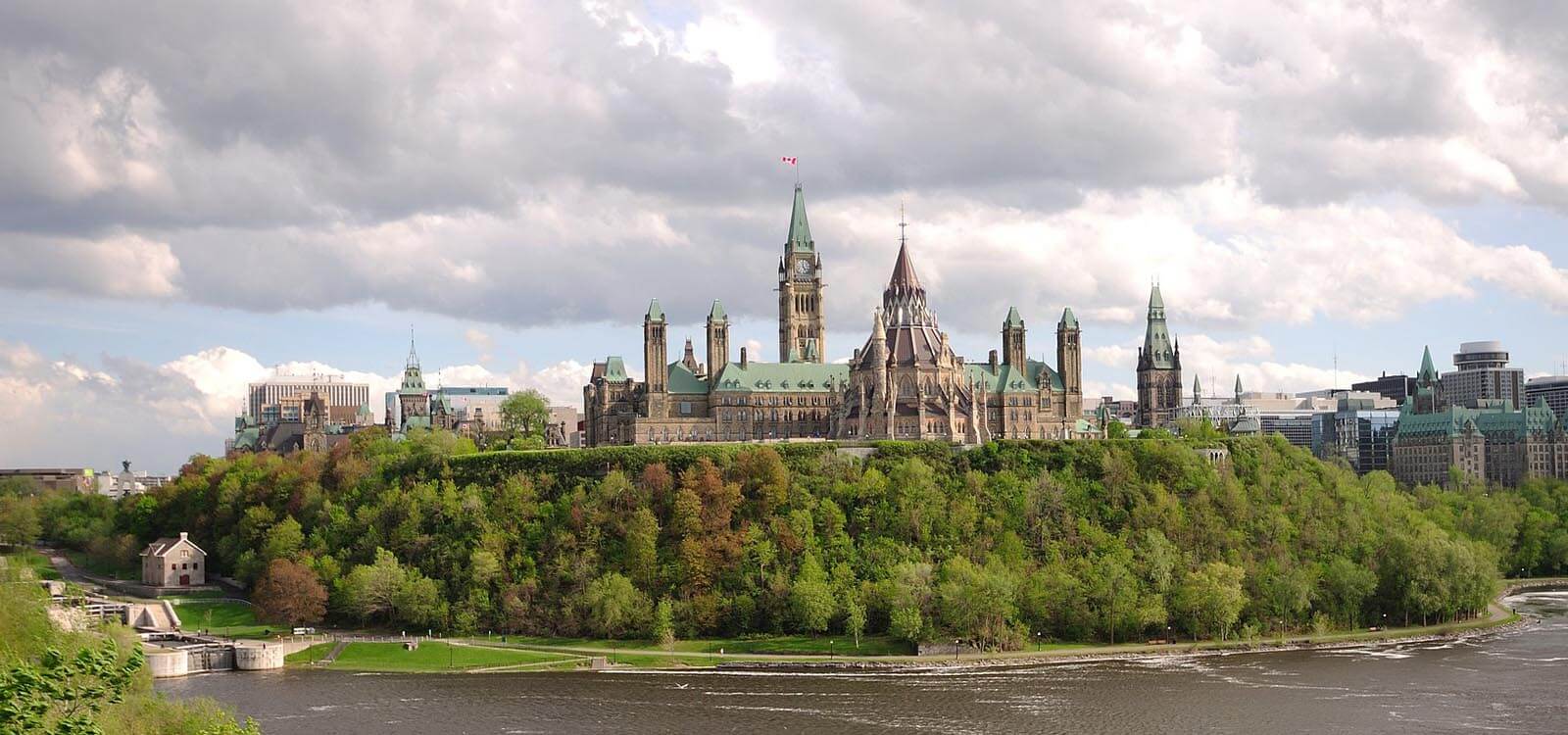
Parliament Hill, Ottawa. Photo: Taxiarchos228, CC BY-SA 3.
Day 5
Smiths Falls to Ottawa
It’s an easy drive today to Ottawa. If you’re in an RV, be aware that motorhomes are not permitted in parking lots in downtown Ottawa. We recommend you park your RV at your chosen campground and take public transit into the city.
See Details
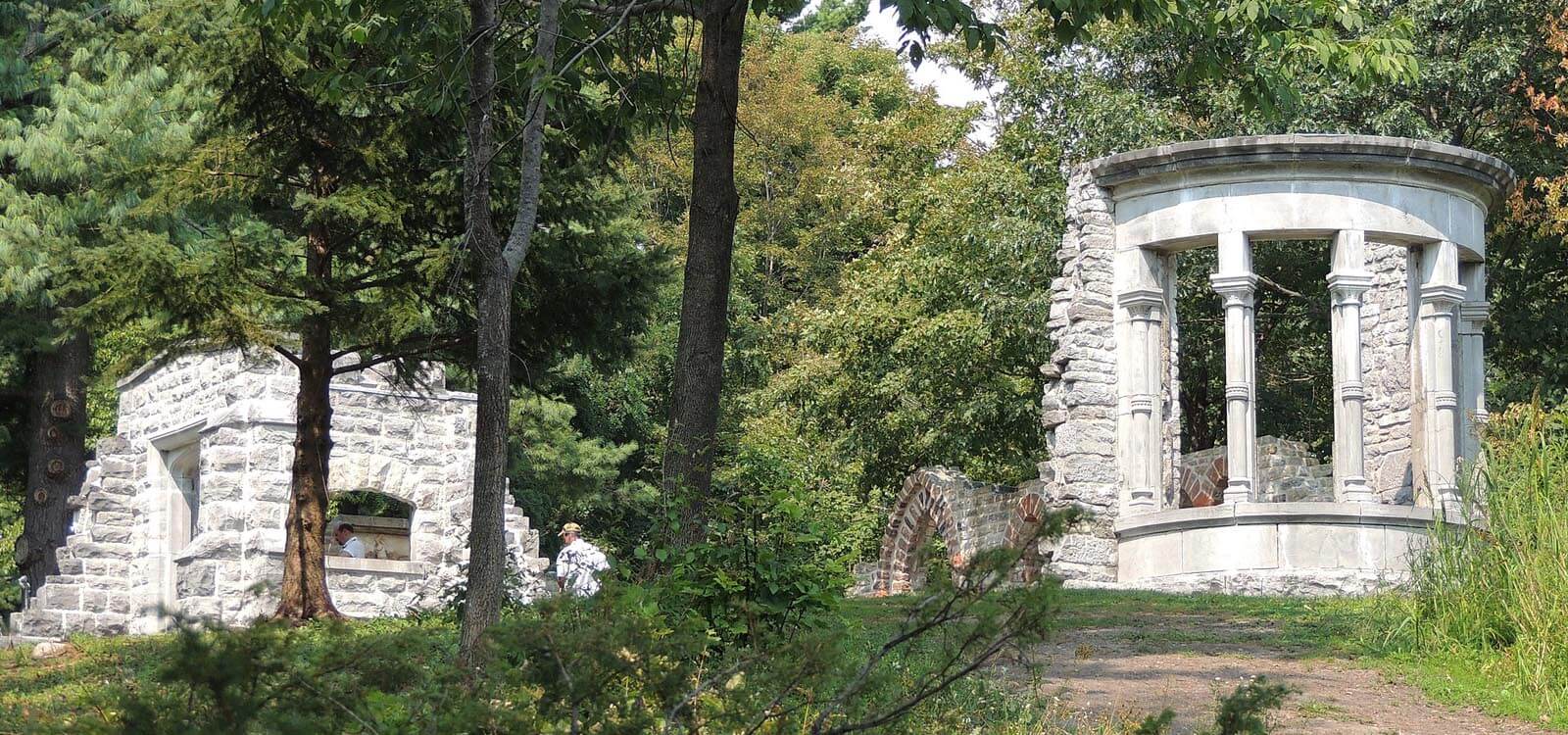
Mackenzie King Estate Ruins. Photo: Miguel, CC BY-SA 2.
Day 6 - 7
Ottawa / Gatineau
Head back into the city again this morning and this time explore the Gatineau side of the river. You may like to consider changing campgrounds – perhaps spending tonight camping in Gatineau Park.
See Details
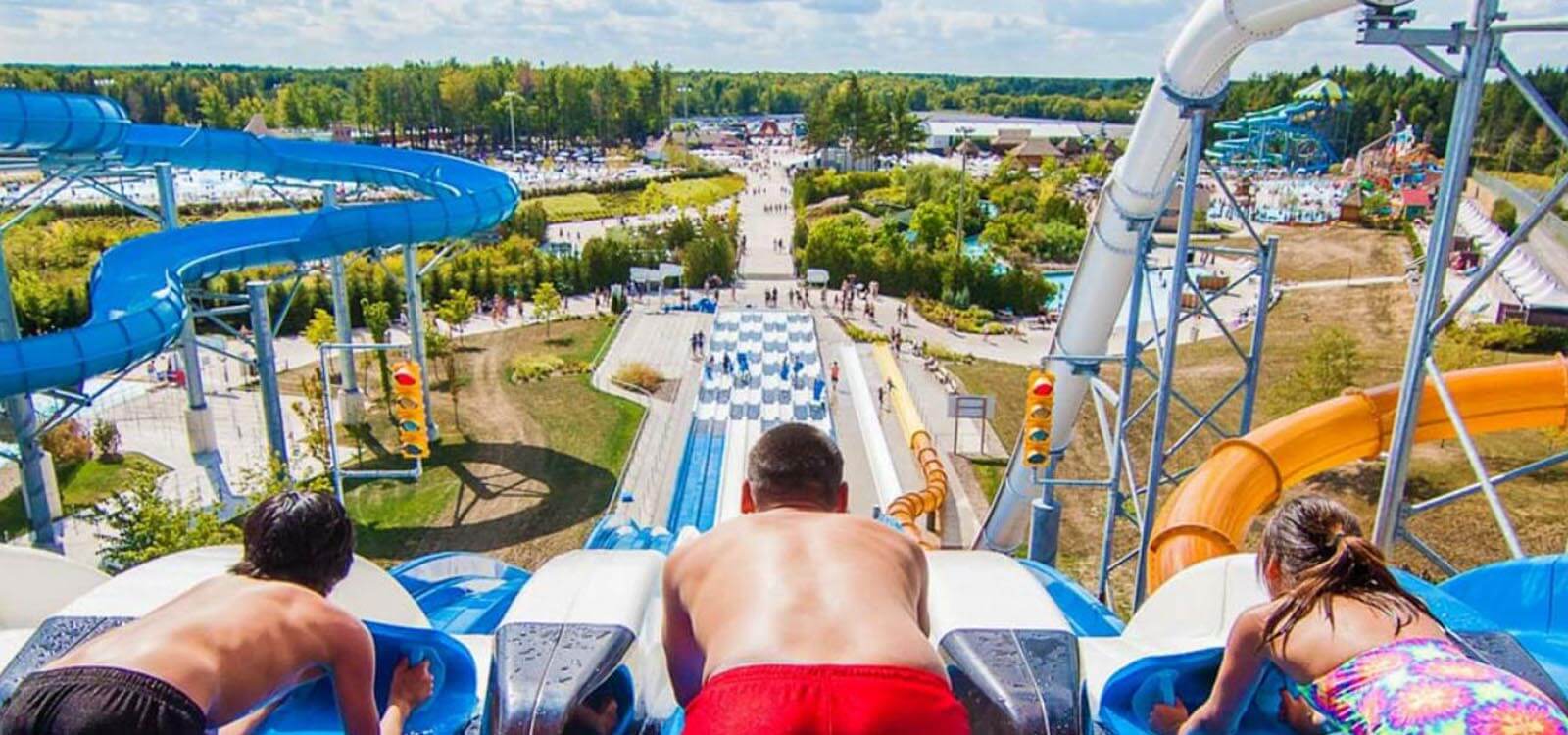
Calypso Waterpark - Photo: Calypso Park
Day 8
Ottawa/Gatineau to Hawkesbury
Head out on either Hwy 17E through Rockland and Alfred en route to today’s destination in Hawkesbury or take Highway 417 – the choice is yours!
See Details
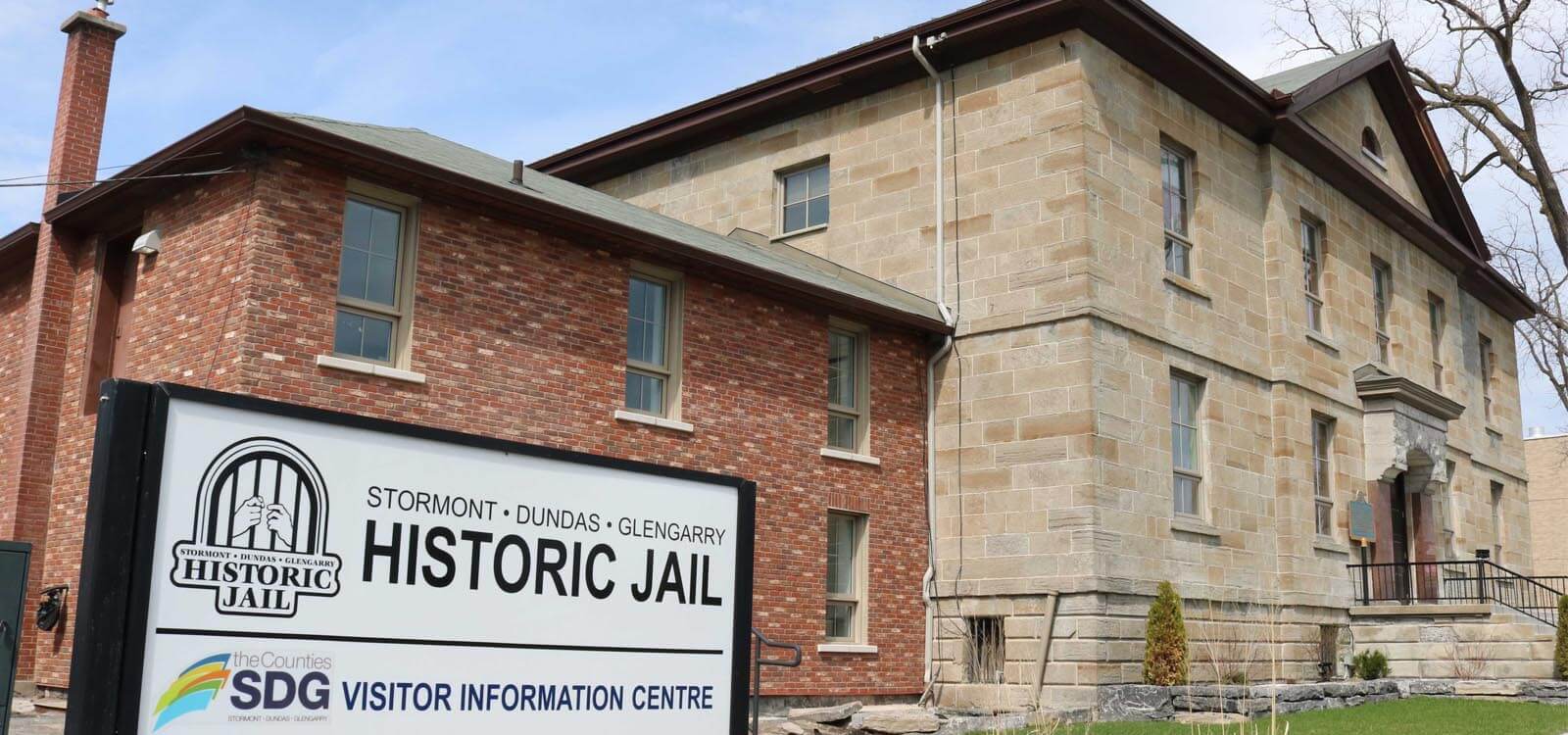
Historic Cornwall SDG Jail - Photo: Cornwall Tourism
Day 9
Hawkesbury to Cornwall
From Hawkesbury, County Road 17 joins road 12 and takes you south to the 417. Exit south onto County Road 34 through Glengarry County to Lancaster. Glengarry County is Ontario’s Celtic Heartland.
See Details
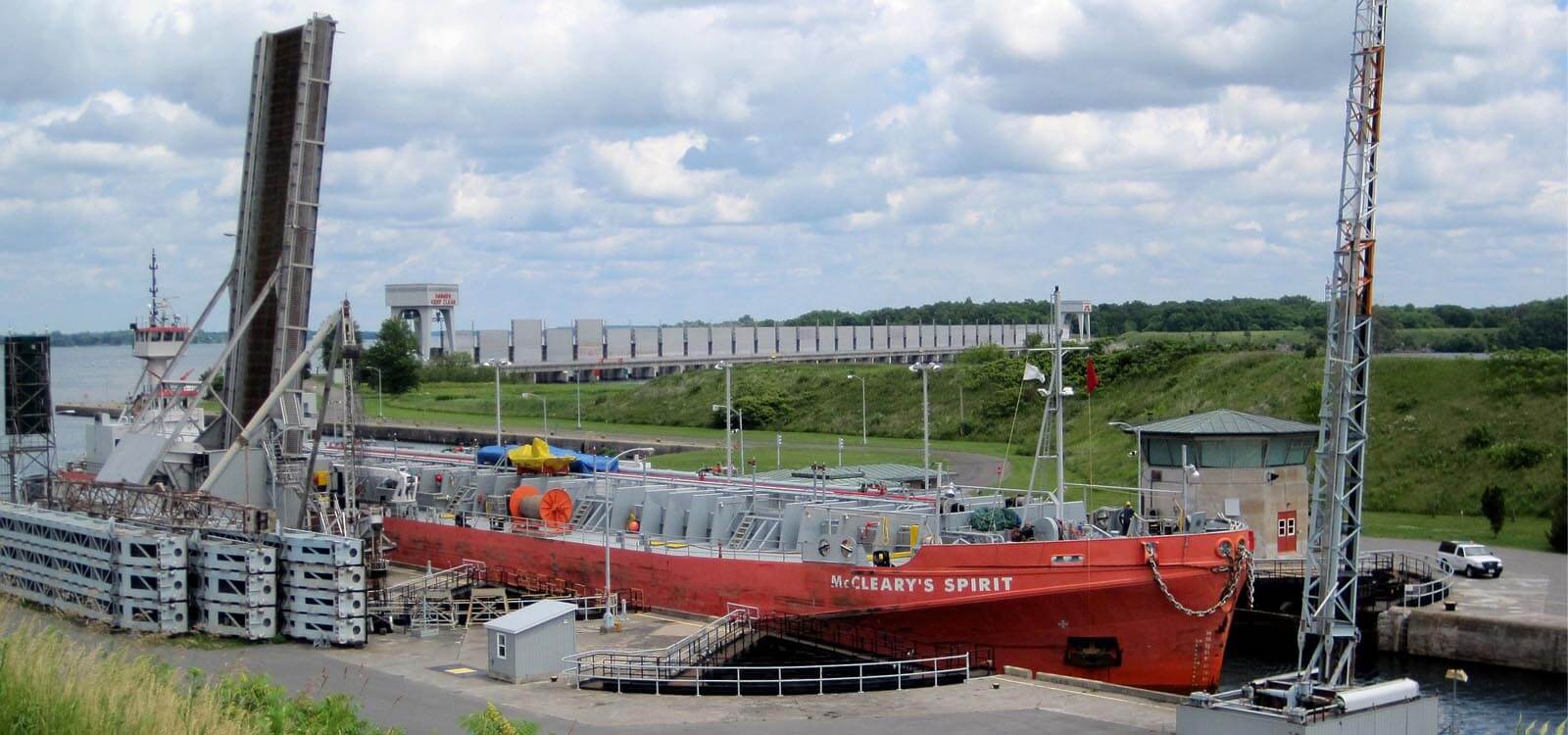
Iroquois Locks - Photo Mac Armstrong CC 2.0
Day 10
Cornwall to Prescott
Before heading out along the great waterways of South Eastern Ontario, notice the large bridge spanning across to Cornwall Island which then crosses the St Lawrence River south to New York State.
See Details
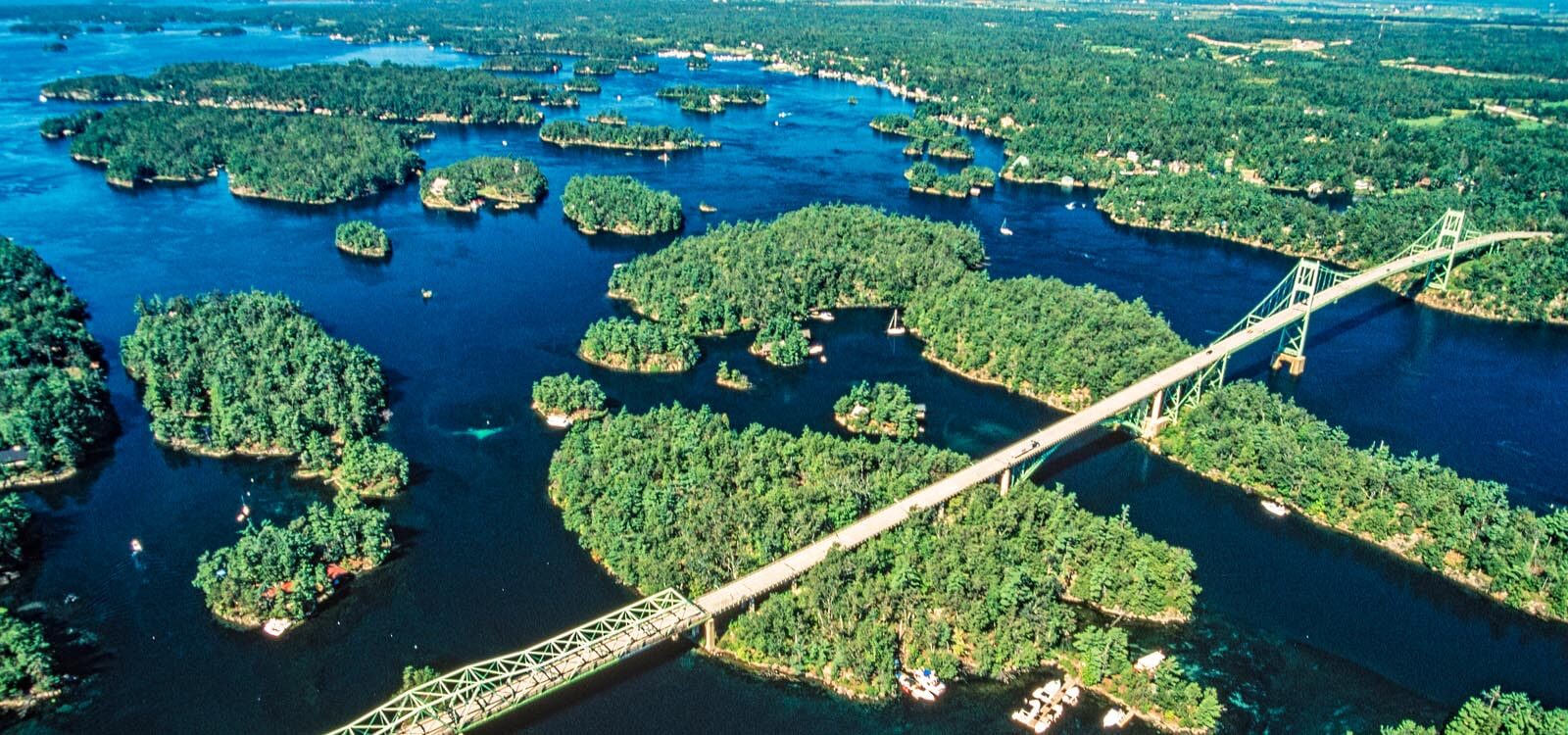
Aerial View of 1000 Islands
Day 11
Prescott to Kingston
The Thousand Islands are the highlight of today’s drive. Travel through Brockville, known as the City of the 1000 Islands.
See Details
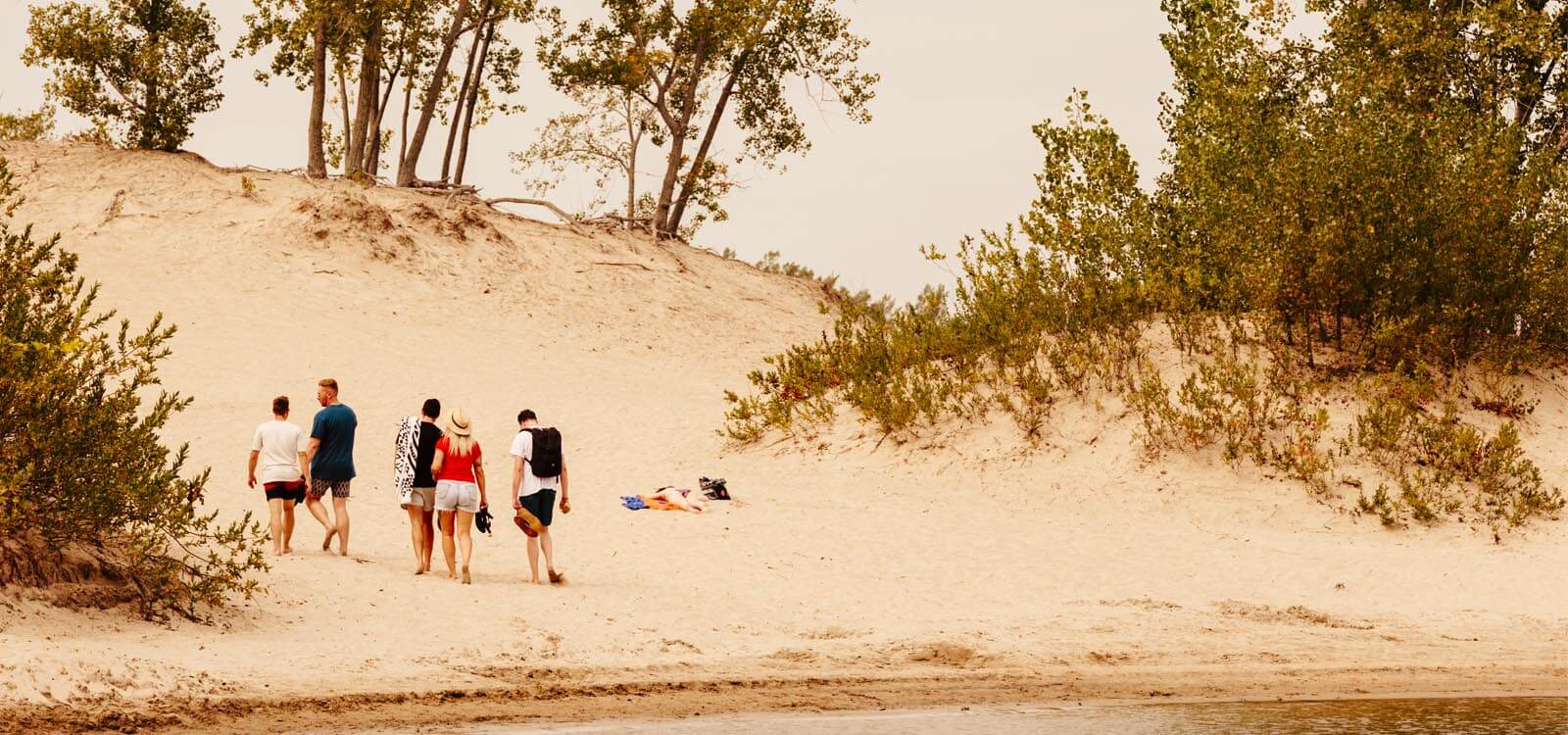
Sandbanks Provincial Park - Photo: Destination Ontario
Day 12
Kingston to Belleville
From Kingston, take Hwy 2 to the junction of Hwy 49 to Picton in Prince Edward County. There is also a free ferry at the end of Hwy 33 between Adolphustown and Glenora and you may like to take this route. Check first to make sure the ferry is accepting RVs on the day you are travelling.
See Details
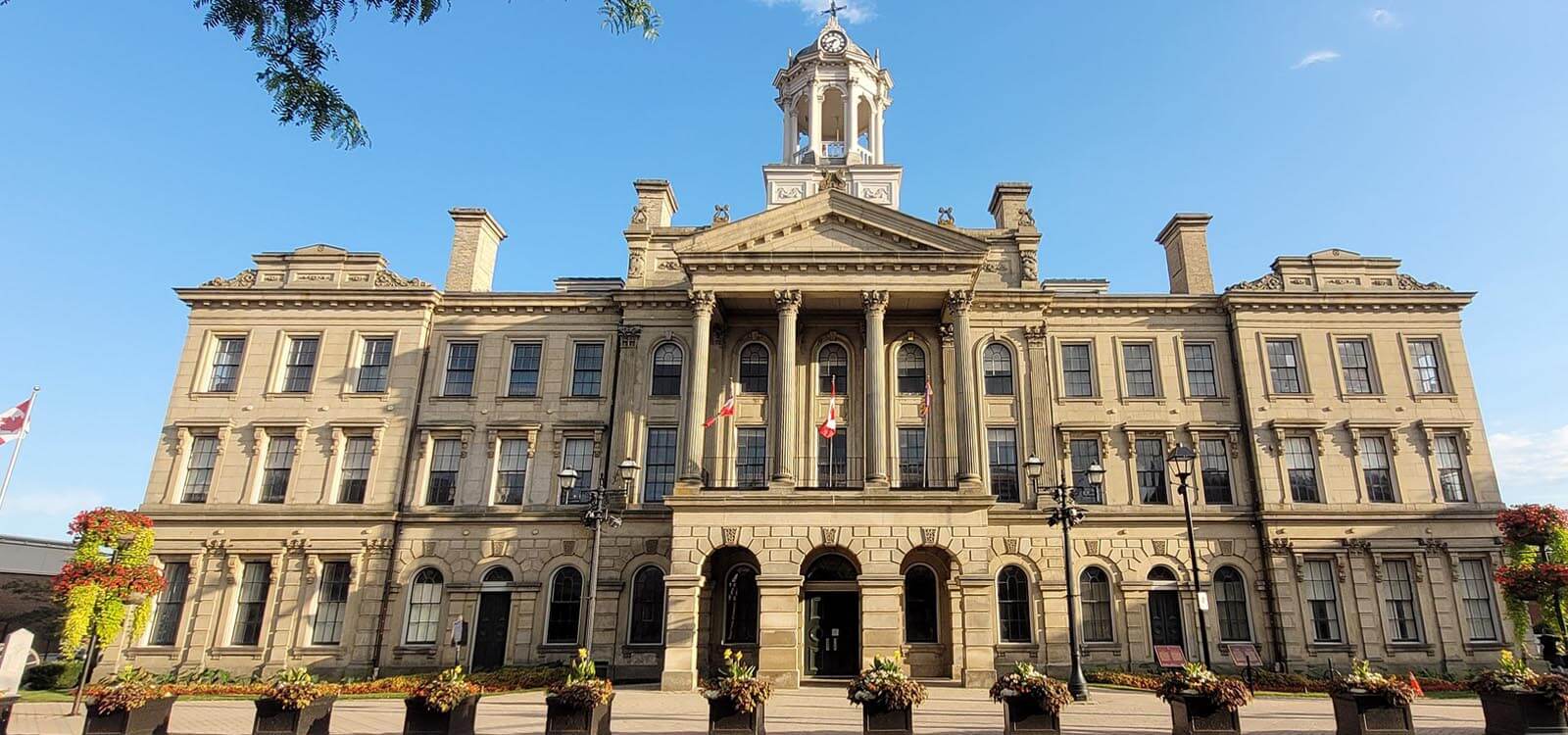
Cobourg Town Hall - Photo: Mhsheikholeslami, CC BY-SA 4.0
Day 13
Belleville to Oshawa
Northumberland County includes portions of the Trent-Severn waterway. The scenic route from Belleville continues along Hwy 2 through Quinte West, Brighton and Port Hope to Bowmanville.
See Details
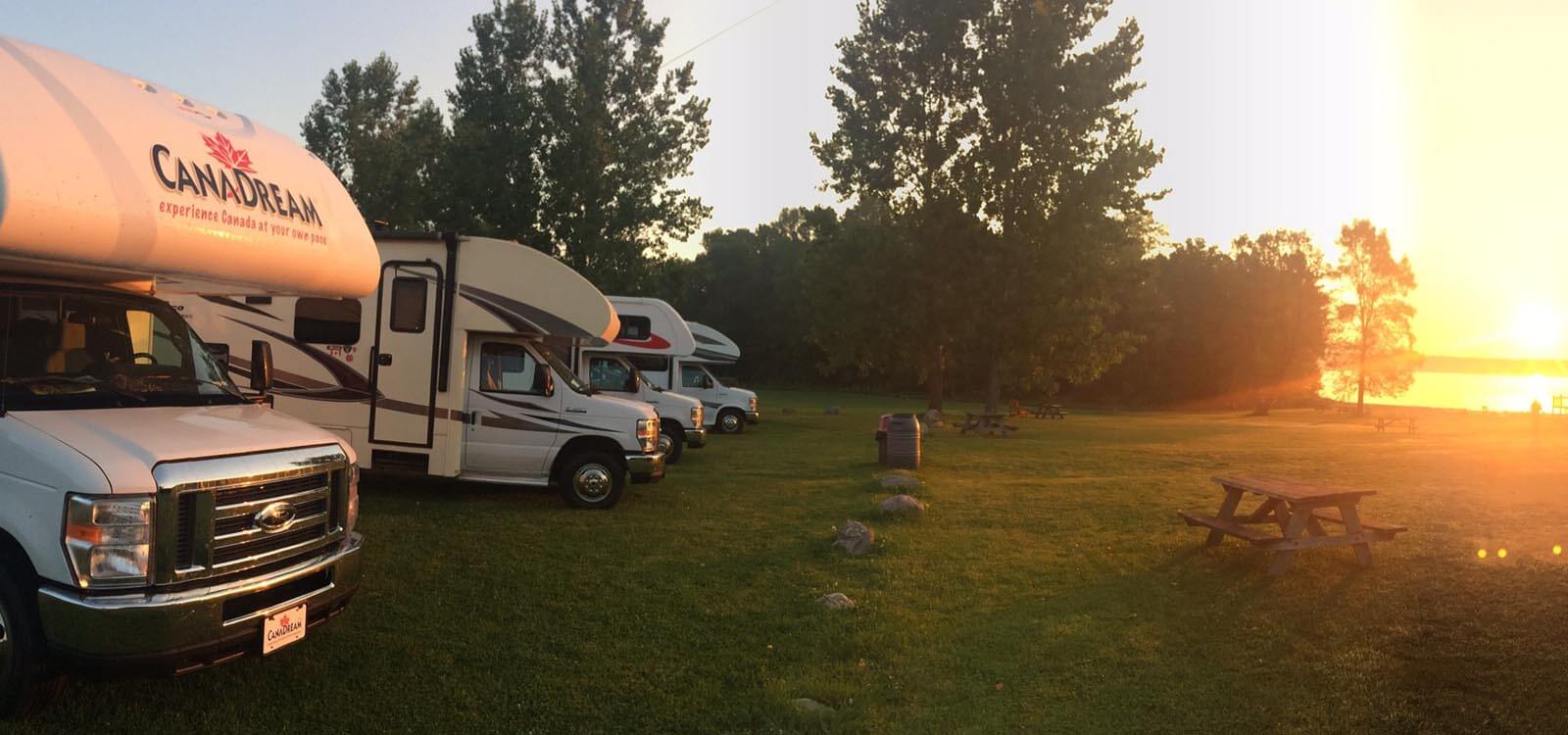
Campsite by the River
Day 14
Oshawa to Brampton
It’s the end of your Waterway Route tour today and an approx. one hour drive back to CanaDream’s location in Brampton.
See Details
Trip Details
We’re Port Severn bound today to begin our Waterway Route tour at the start of the Trent-Severn Waterway. Lock 45 is the smallest and northern-most, limiting the size of vessels navigating the entire waterway. This national historic site forms part of a historic navigation system that connects Lake Ontario to Georgian Bay enabling boaters and paddlers the opportunity to travel 386km of waterway.
Other highlights of the area include Six Mile Lake Provincial Park, White’s Falls and the Coldwater Canadiana Heritage Museum.
Where to Camp: Six Mile Lake Provincial Park.
Other highlights of the area include Six Mile Lake Provincial Park, White’s Falls and the Coldwater Canadiana Heritage Museum.
Where to Camp: Six Mile Lake Provincial Park.
Take time out en route to Orillia and Kirkfield (Upper Big Chute Road, Hwy 17) to check out the Big Chute Marine Railway at lock 44. It’s the only marine railway of its kind still in use in North America.
The ‘Railway’ physically lifts boats from the water and over a hill on a track system before lowering them back into the water to continue their journey.
Hometown of Canadian singer/songwriter, Gordon Lightfoot, Orillia is an outdoor lover’s paradise. Couchiching Beach Park features a town dock and sandy beaches along the shores of Lake Couchiching. Located next to the park is French’s Hot Dog Stand, which opened in 1920 and still operates.
Your final destination today is Kirkfield, lock 36 here being at the highest elevation of the Trent waterway. Take a self-guided tour to learn about the operation of the massive hydraulic lift, allowing boats to be lifted high in the air. The Kirkfield Lift Lock is one of only two on the waterway, the other we’ll visit on Day 3 in Peterborough.
Where to Camp: Balsam Lake Provincial Park. Reservations are essential during the peak camping season.
The ‘Railway’ physically lifts boats from the water and over a hill on a track system before lowering them back into the water to continue their journey.
Hometown of Canadian singer/songwriter, Gordon Lightfoot, Orillia is an outdoor lover’s paradise. Couchiching Beach Park features a town dock and sandy beaches along the shores of Lake Couchiching. Located next to the park is French’s Hot Dog Stand, which opened in 1920 and still operates.
Your final destination today is Kirkfield, lock 36 here being at the highest elevation of the Trent waterway. Take a self-guided tour to learn about the operation of the massive hydraulic lift, allowing boats to be lifted high in the air. The Kirkfield Lift Lock is one of only two on the waterway, the other we’ll visit on Day 3 in Peterborough.
Where to Camp: Balsam Lake Provincial Park. Reservations are essential during the peak camping season.
The Kawartha Lakes region features lakes galore and today your journey will take you around Balsam Lake, stopping in Rosedale at Lock 35, before continuing on Highway 35 toward Peterborough.
At the junction of Highways 35 and 8, take a short side trip into Fenelon Falls then rejoin Highway 35 via 121. Lock 34 at Fenelon Falls is surrounded by flower gardens courtesy of the Fenelon Falls Horticultural Society. Stop in Lindsay, where lock 33 is located next to Old Mill Park with access from the main navigation channel to Lake Scugog. The Olde Goal Museum and Heritage Centre (open for tours Tuesday-Saturday) dates back to 1863 and was designated a heritage building in 2000.
The area between the Kawartha Lakes and Haliburton Highlands is a hot spot for holiday cottages along the Trent Severn Waterway. Although traditional beachfront cottages are being steadily replaced with elaborate permanent homes, the area (dubbed cottage country) is still popular with urban dwellers looking for a summer escape.
End today’s adventure in Peterborough. Known as “The Electric City, Peterborough was the first home of Canadian General Electric back in 1892. Here, the first electric car was produced in 1899. It also has a claim to fame as the first Canadian city to have electric streetlights. Peterborough is blessed with great parks and is also a fitting home to the Canadian Canoe Museum, showcasing the history of the canoe in Canada.
Where to Camp: Shady Acres (Serviced) or at Emily Provincial Park (non-serviced).
At the junction of Highways 35 and 8, take a short side trip into Fenelon Falls then rejoin Highway 35 via 121. Lock 34 at Fenelon Falls is surrounded by flower gardens courtesy of the Fenelon Falls Horticultural Society. Stop in Lindsay, where lock 33 is located next to Old Mill Park with access from the main navigation channel to Lake Scugog. The Olde Goal Museum and Heritage Centre (open for tours Tuesday-Saturday) dates back to 1863 and was designated a heritage building in 2000.
The area between the Kawartha Lakes and Haliburton Highlands is a hot spot for holiday cottages along the Trent Severn Waterway. Although traditional beachfront cottages are being steadily replaced with elaborate permanent homes, the area (dubbed cottage country) is still popular with urban dwellers looking for a summer escape.
End today’s adventure in Peterborough. Known as “The Electric City, Peterborough was the first home of Canadian General Electric back in 1892. Here, the first electric car was produced in 1899. It also has a claim to fame as the first Canadian city to have electric streetlights. Peterborough is blessed with great parks and is also a fitting home to the Canadian Canoe Museum, showcasing the history of the canoe in Canada.
Where to Camp: Shady Acres (Serviced) or at Emily Provincial Park (non-serviced).
Tip: Port Severn and Orillia are connecting points to the Fur Trade Route and the Prospector Route.
Follow Highway 7 through to Perth and Smiths Falls. Take a break at Sharbot Lake Provincial Park – perhaps even a swim might be on the agenda? This afternoon, check out the town of Perth, founded in 1816 as part of a defence strategy protecting a passageway on the Rideau Canal between Ottawa and Fort Henry. Stroll through the Heritage District where some of the finest examples of stone buildings from the 1830-1850s still stand. Don’t miss the Mammoth Cheese Exhibit, commemorating the production of a 22,000-pound cheese for the Chicago World’s Fair of 1893 – quirky, but still a good photo op.
Arriving in Smith’s Falls, set your compass for the Railway Museum of Eastern Ontario. Open daily from Memorial Day to Thanksgiving, this hands-on museum offers a unique look into our railway past. A 19th century stone mill building with an observation room on the top floor houses the Rideau Canal Visitor Centre and it’s worth a visit to check out other must-sees in the town.
Where to Camp: Smith’s Falls Campground. Bass Lake Campground. Murphys Point Provincial Park
Arriving in Smith’s Falls, set your compass for the Railway Museum of Eastern Ontario. Open daily from Memorial Day to Thanksgiving, this hands-on museum offers a unique look into our railway past. A 19th century stone mill building with an observation room on the top floor houses the Rideau Canal Visitor Centre and it’s worth a visit to check out other must-sees in the town.
Where to Camp: Smith’s Falls Campground. Bass Lake Campground. Murphys Point Provincial Park
It’s an easy drive today to Ottawa. If you’re in an RV, be aware that motorhomes are not permitted in parking lots in downtown Ottawa. We recommend you park your RV at your chosen campground and take public transit into the city. Allow at least two days in Canada’s capital. Visit Parliament Hill, home to Canada’s federal government. Stroll around the city’s historic buildings and monuments. Ottawa is home to 8 locks on the Rideau Canal all of which are operated by hand cranks. In winter time, the canal forms an outdoor skating rink. Ottawa is home to a number of museums and galleries, notable amongst them the Canadian War Museum and the Bank of Canada Museum. Those with an interest in art are catered for at the National Gallery of Canada and the National Art Centre. For a view over the river to neighbouring Gatineau, you can’t beat a visit to Nepean Point.
CanaDream Club Partners:
CanaDream Club Partners:
Head back into the city again this morning and this time explore the Gatineau side of the river. You may like to consider changing campgrounds – perhaps spending tonight camping in Gatineau Park. Visit the Canadian Museum of History and Chaudiere Falls. The grounds of the Museum of History afford spectacular views over the river to Parliament Hill and the Ottawa Skyline. Spend time in Gatineau Park and hike some trails. The Mackenzie King Estate in Gatineau Park was once the summer home of Canada’s longest-serving prime minister. Enjoy the picturesque architectural ruins that King collected and reconstructed here.
Where to Camp: Gatineau Park – advance reservations are essential.
CanaDream Club Partners:
Where to Camp: Gatineau Park – advance reservations are essential.
CanaDream Club Partners:
Head out on either Hwy 17E through Rockland and Alfred en route to today’s destination in Hawkesbury or take Highway 417 – the choice is yours!
The Prescott and Russell region is known for its agritourism and is strong in French language and culture along the Quebec border. Follow the Brew & Chew route from Rockland through Alfred, L’Original, and Vankleek Hill. Vankleek Hill is known as the “Gingerbread Capital of Ontario”. Over two hundred homes here feature gingerbread architectural designs. Look out for the grain silos on Hwy 417 featuring giant murals known as Popsilos. Limoges has the largest wave pool in Canada at the Calypso Waterpark – if you’re travelling with kids, it’s a great place for a leisure stop. Arrive in Hawkesbury, a largely French-speaking area, prominent for its farms with large vegetable and berry crops.
Where to Camp: Cedar Shade Campground or Voyageur Provincial Park.
The Prescott and Russell region is known for its agritourism and is strong in French language and culture along the Quebec border. Follow the Brew & Chew route from Rockland through Alfred, L’Original, and Vankleek Hill. Vankleek Hill is known as the “Gingerbread Capital of Ontario”. Over two hundred homes here feature gingerbread architectural designs. Look out for the grain silos on Hwy 417 featuring giant murals known as Popsilos. Limoges has the largest wave pool in Canada at the Calypso Waterpark – if you’re travelling with kids, it’s a great place for a leisure stop. Arrive in Hawkesbury, a largely French-speaking area, prominent for its farms with large vegetable and berry crops.
Where to Camp: Cedar Shade Campground or Voyageur Provincial Park.
From Hawkesbury, County Road 17 joins road 12 and takes you south to the 417. Exit south onto County Road 34 through Glengarry County to Lancaster. Glengarry County is Ontario’s Celtic Heartland. In early days, Gaelic was the most common language in the region, with the population being mainly emigrants from the Scottish Highlands. The North and South Glengarry circuits include 60 points of interest including St Andrew’s Church, dating back to 1787. The Glengarry Pioneer Museum in Dunvegan is worth a visit. North of Williamstown, stop at the historic stone ruins of the St Raphael Cathedral which once served as the administrative centre for the Catholic Church in Upper Canada. At Lancaster, join Hwy 401 to Cornwall which was settled by an influx of Empire Loyalists from the Thirteen Colonies in 1784. Cornwall is Ontario’s most easterly city. Visit the Historic SDG Jail, decommissioned in 2002, which now offers paranormal experiences and seasonal tours.
Where to Camp: Maplewood Acres, Upper Canada Campground or Parks of the St Lawrence.
Where to Camp: Maplewood Acres, Upper Canada Campground or Parks of the St Lawrence.
Before heading out along the great waterways of South Eastern Ontario, notice the large bridge spanning across to Cornwall Island which then crosses the St Lawrence River south to New York State.
Known as the Seaway International Bridge, this is one of a number of entry points into the USA. Upon leaving Cornwall, join Highway 2, a picturesque route taking you along the St Lawrence River. Highlights today are the Long Sault Parkway, a series of 11 scenic islands stretching 10 km between high points of land created by the flooding of the St. Lawrence Seaway. Go back in time at Upper Canada Village, the largest living history site in Canada. At Iroquois, stop to see lakers and ocean freighters in the seven locks transiting the St Lawrence Seaway. This is one of the few close-up views of the locks which allow a ship passage through each lock in about 45 minutes. Prescott is home to “Fort Wellington, which represents one of the best-preserved 19th-century fortifications along the St. Lawrence River. It is famous for the nearby site of the Battle of the Windmill in 1838 during the Upper Canada Rebellion where Loyalists defeated an invasion of insurgents from the States. Visit the Downtown historic area with wall plaques that explain the history and events during early settlement. The Prescott to Bytown railroad became part of the CNR rail network in later years. The St Lawrence River itself has long been a conduit for smuggling pirate loot gold and alcohol between Canada and the USA. The International Bridge at Johnstown is made up of six suspension bridge connections, linking the towns of Prescott in Canada to Ogdensburg in the USA.
Where to Camp: Parks of the St. Lawrence, Happy Green Acres KOA or Cardinal KOA.
Known as the Seaway International Bridge, this is one of a number of entry points into the USA. Upon leaving Cornwall, join Highway 2, a picturesque route taking you along the St Lawrence River. Highlights today are the Long Sault Parkway, a series of 11 scenic islands stretching 10 km between high points of land created by the flooding of the St. Lawrence Seaway. Go back in time at Upper Canada Village, the largest living history site in Canada. At Iroquois, stop to see lakers and ocean freighters in the seven locks transiting the St Lawrence Seaway. This is one of the few close-up views of the locks which allow a ship passage through each lock in about 45 minutes. Prescott is home to “Fort Wellington, which represents one of the best-preserved 19th-century fortifications along the St. Lawrence River. It is famous for the nearby site of the Battle of the Windmill in 1838 during the Upper Canada Rebellion where Loyalists defeated an invasion of insurgents from the States. Visit the Downtown historic area with wall plaques that explain the history and events during early settlement. The Prescott to Bytown railroad became part of the CNR rail network in later years. The St Lawrence River itself has long been a conduit for smuggling pirate loot gold and alcohol between Canada and the USA. The International Bridge at Johnstown is made up of six suspension bridge connections, linking the towns of Prescott in Canada to Ogdensburg in the USA.
Where to Camp: Parks of the St. Lawrence, Happy Green Acres KOA or Cardinal KOA.
The Thousand Islands are the highlight of today’s drive. Travel through Brockville, known as the City of the 1000 Islands.
The 1439-foot Railway Tunnel here was the first to be built in Canada. It is now a pedestrian tunnel running underneath the city and features a brilliant display of rock cuts and stalactites illuminated by LED lighting.
The 1000 Islands Parkway begins just west of Brockville and extends for about 40km to Gananoque. As you continue down Hwy 2, you’ll begin to see islands of various sizes on your left, most with houses on them. Apart from some national and provincial campsites, these islands are largely privately owned. Of the publicly owned islands, a group of 21 form the Thousand Islands National Park, the oldest of Canada’s national parks east of the Rocky Mountains. This wilderness park has hiking trails,offering the opportunity to observe rare species of turtles and birds. While the area is called the 1000 Islands, there are actually 1864 islands that make up this region.
Mallorytown was founded in 1784 by United Empire Loyalists and was the site of Canada’s first glassworks factory. Visit the Thousand Islands Boat Museum, London Bay lookout and interpretive centre, located in Mallory Landing.
Cruises in the 1000 Islands are available from Rockport and Gananoque. Rockport Cruises offer the opportunity to access two prominent castles on the US side, Boldt Castle and Singer Castle. Singer Castle is still a part-time residence for the family of the sewing machine empire. Passports are required for this cruise. Gananoque is the western gateway to the 1000 Islands and is the birthplace of Thousand Island Dressing. Cruises are also offered here to various points of interest.
End today in Kingston, one of Ontario’s most well-known cities for early Canadian history. Tourism attractions here include the downtown waterfront, city hall, Queens University, Bellevue House, Fort Henry and a tour of the Kingston “Pen”, a maximum security prison which closed in 2013. Bellevue House was the country estate of Sir John A Macdonald, the chief architect of Confederation which led to the creation of the Dominion of Canada in 1867.
Where to Camp: Charleston Lake Provincial Park, Sand Lake Campground, KOA 1000 Islands, Rideau Acres Campground.
The 1439-foot Railway Tunnel here was the first to be built in Canada. It is now a pedestrian tunnel running underneath the city and features a brilliant display of rock cuts and stalactites illuminated by LED lighting.
The 1000 Islands Parkway begins just west of Brockville and extends for about 40km to Gananoque. As you continue down Hwy 2, you’ll begin to see islands of various sizes on your left, most with houses on them. Apart from some national and provincial campsites, these islands are largely privately owned. Of the publicly owned islands, a group of 21 form the Thousand Islands National Park, the oldest of Canada’s national parks east of the Rocky Mountains. This wilderness park has hiking trails,offering the opportunity to observe rare species of turtles and birds. While the area is called the 1000 Islands, there are actually 1864 islands that make up this region.
Mallorytown was founded in 1784 by United Empire Loyalists and was the site of Canada’s first glassworks factory. Visit the Thousand Islands Boat Museum, London Bay lookout and interpretive centre, located in Mallory Landing.
Cruises in the 1000 Islands are available from Rockport and Gananoque. Rockport Cruises offer the opportunity to access two prominent castles on the US side, Boldt Castle and Singer Castle. Singer Castle is still a part-time residence for the family of the sewing machine empire. Passports are required for this cruise. Gananoque is the western gateway to the 1000 Islands and is the birthplace of Thousand Island Dressing. Cruises are also offered here to various points of interest.
End today in Kingston, one of Ontario’s most well-known cities for early Canadian history. Tourism attractions here include the downtown waterfront, city hall, Queens University, Bellevue House, Fort Henry and a tour of the Kingston “Pen”, a maximum security prison which closed in 2013. Bellevue House was the country estate of Sir John A Macdonald, the chief architect of Confederation which led to the creation of the Dominion of Canada in 1867.
Where to Camp: Charleston Lake Provincial Park, Sand Lake Campground, KOA 1000 Islands, Rideau Acres Campground.
From Kingston, take Hwy 2 to the junction of Hwy 49 to Picton in Prince Edward County. There is also a free ferry at the end of Hwy 33 between Adolphustown and Glenora and you may like to take this route. Check first to make sure the ferry is accepting RVs on the day you are travelling.
Picton and its surrounding areas have a long history of Loyalist heritage. The Naval Marine Archives hold a extensive collection of Great Lakes marine history. Prince Edward County is an agricultural area featuring more than forty estate wineries. Pinot Noir and Chardonnay are the most common grape varieties here. It Is also known for cheese, cider and beer tastings. In the southwest of the county is Sandbanks Provincial Park, featuring the world’s largest baymouth barrier dune formation. Day-use permits need to be booked and reservations are recommended for overnight sites.
End today in Belleville, located on the Bay of Quinte. The town was the first location for Dixie Lee Fried Chicken which became the fourth-largest chicken franchise company in Canada. Numerous historic buildings here date from the 1850s including the Victorian High Gothic style City Hall. The Grand Trunk Railway station is the oldest continuously operating railway station in Canada and still serves the mainline between Toronto and Montreal.
Where to Camp: Presqu’ile Provincial Park, Sandbanks Provincial Park, KOA Brighton.
Picton and its surrounding areas have a long history of Loyalist heritage. The Naval Marine Archives hold a extensive collection of Great Lakes marine history. Prince Edward County is an agricultural area featuring more than forty estate wineries. Pinot Noir and Chardonnay are the most common grape varieties here. It Is also known for cheese, cider and beer tastings. In the southwest of the county is Sandbanks Provincial Park, featuring the world’s largest baymouth barrier dune formation. Day-use permits need to be booked and reservations are recommended for overnight sites.
End today in Belleville, located on the Bay of Quinte. The town was the first location for Dixie Lee Fried Chicken which became the fourth-largest chicken franchise company in Canada. Numerous historic buildings here date from the 1850s including the Victorian High Gothic style City Hall. The Grand Trunk Railway station is the oldest continuously operating railway station in Canada and still serves the mainline between Toronto and Montreal.
Where to Camp: Presqu’ile Provincial Park, Sandbanks Provincial Park, KOA Brighton.
Northumberland County includes portions of the Trent-Severn waterway. The scenic route from Belleville continues along Hwy 2 through Quinte West, Brighton and Port Hope to Bowmanville.
The Victorian Town Hall at Cobourg is one of the finer public buildings from the 1850’s reflecting the prevalent economic optimism of the times. Port Hope was the first permanent settlement of Empire Loyalists from New York State. At Bowmanville, step back to different times with a visit to Clarington Museum and Tyrone Mills. Since 1846 it has been a grist mill, bakery and apple cider producer. The city of Oshawa was founded in 1875 as Skea’s Corners but was renamed in 1842. Oshawa is an Indian word referring to a stream crossing. Those interested in automobile history may like to visit the Canadian Automotive Museum which features Canadian built cars from 1900 to 1945 during a time when many small car companies operated in Ontario. Also of interest is the Ontario Regiment Museum which displays a hundred operational military vehicles.
Where to Camp: Glen Rouge Campground
The Victorian Town Hall at Cobourg is one of the finer public buildings from the 1850’s reflecting the prevalent economic optimism of the times. Port Hope was the first permanent settlement of Empire Loyalists from New York State. At Bowmanville, step back to different times with a visit to Clarington Museum and Tyrone Mills. Since 1846 it has been a grist mill, bakery and apple cider producer. The city of Oshawa was founded in 1875 as Skea’s Corners but was renamed in 1842. Oshawa is an Indian word referring to a stream crossing. Those interested in automobile history may like to visit the Canadian Automotive Museum which features Canadian built cars from 1900 to 1945 during a time when many small car companies operated in Ontario. Also of interest is the Ontario Regiment Museum which displays a hundred operational military vehicles.
Where to Camp: Glen Rouge Campground
It’s the end of your Waterway Route tour today and an approx. one hour drive back to CanaDream’s location in Brampton.
The fastest route is via the 407 but this involves tolls. If you prefer a non-toll route, take the 401 which will add approximately 30 minutes to your travel time.
The fastest route is via the 407 but this involves tolls. If you prefer a non-toll route, take the 401 which will add approximately 30 minutes to your travel time.
